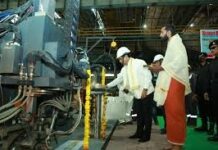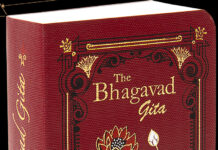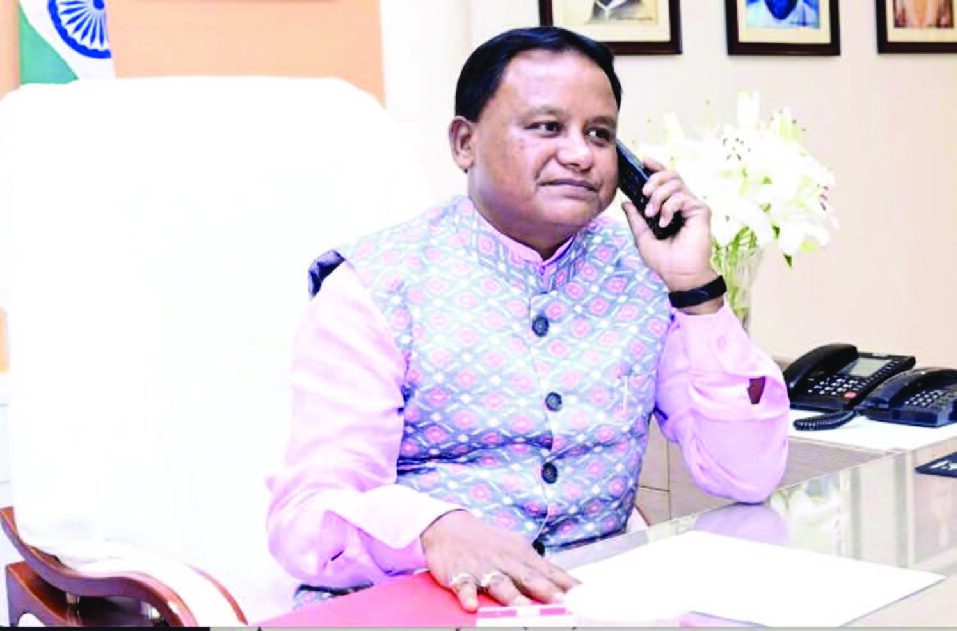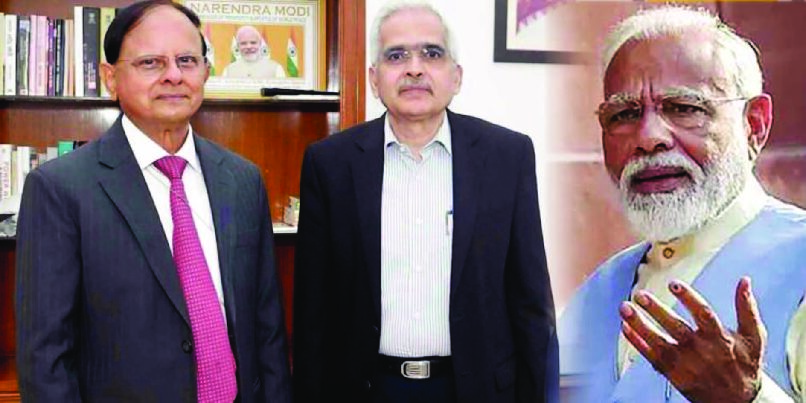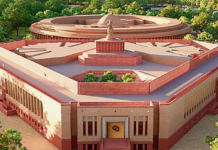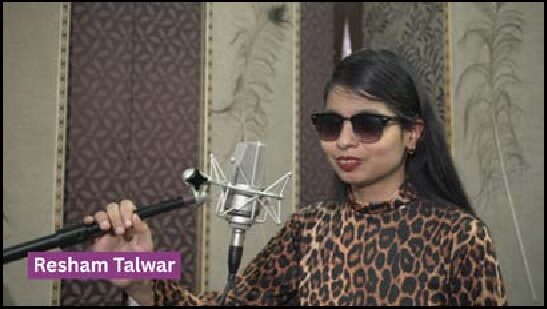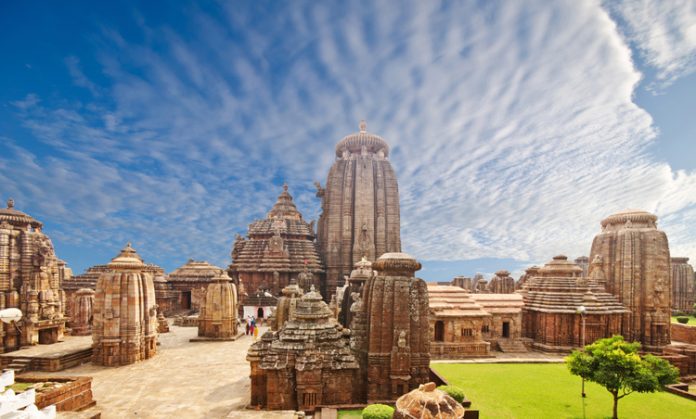Odisha, the place where flourished many religious tenets, gallantry of the local militia, architectural representations of extraordinary artistic skill and craftsmanship, prosperity through maritime link with foreign countries from the hoary past, profound mineral reserves and forest products, gift of nature through beautiful mountains, waterfalls, lakes such as Chilika, peculiar flora and fauna.
This is the holy land, this is the sacred land.
Here is no impurity but only righteousness
Here is no vice but only spirituality
We have no other preceptor but jagadguru, the preceptor of the Universe
No other god we have but only one the lord of the Universe, Jagannatha.
The above stanza speaks the quintessence of Odishan culture, its land and people, history and heritage. Odisha has been known by many names in the past and sometime those name have denoted a portion of the region and at some other time a vast territory which the kings of Odisha had conquered. In the third century B.C. the name of this territory was Udra and also Kalinga. Kalinga changed to Tri Kalinga meaning three Kalingas. Koshala, Kongoda, Utkala were the other names which stood for Odisha. But during the entire history of Odisha starting from 7th century AD up to beginning of 16th century Odisha extended from the River Ganga in the north up to the River Godavari in the south. The Bay of Bengal is in the east and the forest tract of Mahakantara in the West.
Heritage of Odisha can be discussed mainly as the place where flourished many religious tenets, gallantry of the local militia, architectural representations of extraordinary artistic skill and craftsmanship, prosperity through maritime link with foreign countries from the hoary past, profound mineral reserves and forest products, gift of nature through beautiful mountains, waterfalls, lakes such as Chilika, peculiar flora and fauna and animal species. Odisha has its disasters too that has left its people to reel under poverty due to oppression and exploitation by non- Hindu and non-Odia rulers who have not only made the innocent people to be susceptible to vagaries of natural calamities which were made acute to antipathy of the rulers. British have taken away valuable minerals during their rule, they have imposed anti-people revenue system and bad Zamindari pattern including the Sun-Set Law. And the most remarkable is that Odisha is the first province which revolted against the British next to ‘Sannyasi Bidroha’. The war lodged against British was so terrifying that they throughout their rule kept Odisha to be governed being divided into four divisions implying they did not allow Odia speaking people to be united under a common administration till they were compelled to declare almost all Odia speaking region as a separate province. This policy of vendetta the British also implemented in 1905 when they divided the Bengal in order to suppress the rising patriotism of the Bengalees.
In spite of all atrocities of the rulers and vagaries of nature the cultural glory of the people of Odisha in the field of literature, dance, music, paintings specially Patta Paintings and handloom cloths have fascinated both the people of India and abroad. However my attempt here is to put the ocean within a small tea-cup which may not give a satisfying picture of Odishan heritage yet I have tried my best to introduce the august delegates with the cultural glory of the State.
LAND OF RELIGIOUS RESURGENCE
From Ashoka’s time that is 3rd century BC Odisha was a region where Buddhism was at its heyday. There are two opinions out of which one informs that the two disciples of Buddhdeva were traders from Odisha. The other theory informs that Odisha was the real birth place Buddhadeva. Be that what it may by the end of 6th century AD esoteric practices entered into Buddhism and it emerged with a new name that is Bajrayana which in due course of time spread throughout India by Buddhist monks such as Nagarjuna, RahulaBhadraIndrabhuti etc. It also penetrated into many South East Asian countries such as China etc. Next to Buddhism the important religion which was popularly accepted by the people of Odisha was Jainism. Today a particular weaver community in Odisha practice Jaina rituals but they do not claim to be Jains. This may be due to the Sanskritization or Hinduization that brought assimilation of these religions.
The reason of such assimilation can be attributed to AdiShankaracharyawho by his spiritual power came to know that the lord of land has been kept underground for the last 144 years when idolaters attacked the kingdom and the deities were taken to a secret place. Then the king was YayatiKesari-I. The king recovered the worn-out images built new images and consecrated the images in a new temple. And thereby Odisha became a privileged State to have the first religious seat of Hinduism following Rugveda of the East and Padmapada the favoured disciple of AdiShankara became the pontiff and Puri is one of the highest sacred seat of Vedic tradition. AdiShankara could have established his seat in any other place but he did not do that. He preferred Odisha that tells its spiritual magnanimity. From that day the Sankaracharya of this famous GobardhanaPitha is entitled to look after the day to day performances in the temple.He is the leader of the Brahmins who supervise the activities in the temple and adorn a special platform named “MuktiMandapa”. Like Buddhist shrines in Sri Lanka a chronicle depicting income and happenings of the temple are recorded in a temple chronicle called MadalaPanji. And Sankaracharya’sGobardhanaPitha is the seat which is dedicated to do wellbeing of Brahmins, Cows, Gods and Santhas , the mendicants. Dr Amiya Kumar Mohapatra who is present here and is a devout devotee of the revered Gurudev can tell in detail .It was due to the Hindu rulers of the region especially from 9th century on ward Odisha became the stronghold of Hinduism. Hinduism penetrated into this region from Gupta rule in general and Samudra Gupta in particular as is known from his Allahabad Pillar Inscription. Therefore we have Siva temples, temples for Mother Goddesses and Vishnu temples to worship these deities as paramount deities of the region. From 10th century epigraphic evidence extant in the Sarada Temple in Maihar (Satana District of Madhya Pradesh) it is proved that Purushottama Vishnu as depicted in the SaradaTilaka text written by a scholar of Kashmir in 9th century was under worship in Odisha at Puri on Sea. For Purushottama a gargantuan temple was built by a powerful King Chola Ganga in 1112 AD. That temple is extant. Many festivals of Vishnu are observed in this temple like other Vishnu temples such as TirupatiVenkateswaraSwamy. But one festival of this temple that is the annual car festival when the images go on a nine day sojourn, is unique which is observed only in Puri temple. The next peculiarity is that there are three deities enshrined on the venerated platform in the sanctum sanctorum and made of wood where as in all other Hindu temples anthropomorphic images are enshrined and the images are mostly made of stone and they have a representative image made of metals to act during festivals. Further images are of crude form and do not confirm to any descriptions given in the texts. The daily temple ritual though is according to Pancharatra Agama yet the large band of temple servitors belonging to various castes have been assigned with meticulously distributed specific duties. The temple not only surpasses many temples in height and craftsmanship but also the varieties of consecrated foods cooked in a unique procedure in large quantities are offered to the gods. Thus Jagannatha along with his two other companions have become the enigmatic cult deity and insignia of Odishan identity.
MILITARY EXPERTISE OF ODIAS
For a long period Odisha remained independent state which testifies the unparalleled military potency of Odia people in India. There is a popular saying that “KalingahSahasikah” meaning the people of Kalinga are brave and courageous. It is only for their gallantry that Arabian invaders and also many succeeding invaders could not conquer Odis ha-Kalinga up to 1568 A.D. Their first attack during the rule of Aniyankabhima Deva-III(1236 A.D.) was successfully combated. So also the second one when his son Narasingha Deva-I was ruling(1247 A.D.) could be ferociously averted. It was only in 1351 Feroze Shah Tughluk attacked Odisha, took away the Purushottama image and the royal treasury from the great temple but failed to establish his rule in this kingdom.But by this time the vast territory in the North India Muslim rule was established including Bengal, the immediate neighbor of Odisha-Kalinga.
ha-Kalinga up to 1568 A.D. Their first attack during the rule of Aniyankabhima Deva-III(1236 A.D.) was successfully combated. So also the second one when his son Narasingha Deva-I was ruling(1247 A.D.) could be ferociously averted. It was only in 1351 Feroze Shah Tughluk attacked Odisha, took away the Purushottama image and the royal treasury from the great temple but failed to establish his rule in this kingdom.But by this time the vast territory in the North India Muslim rule was established including Bengal, the immediate neighbor of Odisha-Kalinga.
In the past to retaliate the Muslim invaders, proceeding behind a livestock shield consisting of lakhs of cattle, this was a war technique indigenously developed by Odias. Hindus do not kill cattle and hence advancement of Muslim army following the cattle flock was not possible to be checked. But by using firearms not only was possible to hit the soldiers behind but also to make way to ably confront the invaders by dispersing the fore runners speedily and sparing those unhurt.
The elephants engaged in war and the indigenous fatal weapons helped the kings of Odisha for safeguarding the independence of Odisha even though the debacle in 1568 is a catastrophe that the kingdom witnessed. For the elephants the King of Odisha was entitled Gajapati, the owner of elephants. The army used firearmssuch as Havili, Tumbha and Chakra which are now used as fireworks in our time. Dr. B.K.Kuanra, Chairman of the Organising Committee belongs to that area where these dangerous military fire arms are prepared and fired on the occasion of marriage ceremony of Lord Shiva.
Precisely it can be said that the process followed for preparation of Havili is very akin to rockets of our time, is prepared by pressing gunpowder into bamboo pipes in three layers. Now the rocket is almost ready. Some additional features are attached to the rocket to produce bursting sound and dazzling light.
The process of ignition of these rockets is equally very peculiar for which a wooden pole is used as the rocket launcher. The rocket is now mounted to the pole by lowering to an inclined position and inserting the balancing rod through the rings. Then the pole is raised to stand straight. One man now remains ready below the launcher with another long bamboo fitted with a burning “Mehtab” at its tip to ignite the rocket. When ignited the rocket starts emitting shower of fire towards the ground. The man below tries to pull the balancing rod downward and when satisfied that the rocket has gained appropriate momentum loosens the clasp allowing it to move with tremendous speed and terrifying sound, leaving back a thick stream of fire and smoke. In minutes time it covers its ultimate distance when the additional features attached to it start producing bursting sound and dazzling light. Generally every rocket is designed to go two to three Kms. It is fatal when it hits someone.
Tumbha is prepared from big wood log,which is carried to the specified place on a cart and planted to the ground firmly by digging a pit, when it is made a fire arm to disperse the cattle shield being ignited fire sprinkles out with ferocious light, heat and sound, which goes up to a height of forty to fifty feet and quite a sizeable area is covered by the red hot iron fillings raining around to be burnt into ash. The possibility of fatal accident cannot be ruled out since the log can burst and the woodpieces can hit causing instant death.
The third variety is Chakra which is though not fatal is equally terrifying. The long bamboo pipe fully loaded with inflammatory materials when ignited revolves round the iron fulcrum in a tremendous speed sprinkling fire around. Sprinkle of fire compels an ordinary onlooker to run away being frightened.
Literary Activities
Contribution of Odias in the field of Sanskrit literature is noteworthy. “SahityaDarpana” by Viswanatha (15th century) is the most remarkable work on Sanskrit rhetoric. He describes himself as the “Sandhivigrahika” or the minister of war and peace of King of Orissa. He also describes himself as the Mohapatra or Finance Minister and as a proficient in eighteen languages. But the most interesting epithet he assumes is ‘Dhvani-prasthapana-paramacarya’ i.e. he lead the Dhvani theory to its legitimate conclusions. He is an out and out supporter of the Dhvani theory. He examines the definitions of Kavya of his predecessors and rejects them. He even criticises the definition of Kavya by the Dhvanikara himself and rejects it. His own definition is very simple and very superior”63. It says “Vakyamrasatmakamkavyam”. Kavya is those sentences (vakyas) which contain aesthetic enjoyment (Rasa) as their spirit or soul. Even Mammata could not rise to this height.
The other remarkable work that the world recognizes is “SiddhantaDarpana”, a treatise on astronomy, authored by Samanta Chandra Sekhara (19th century). Prior to these two notable works GeetaGovinda by Jayadeva (12thcentury), “Kadambari” written by BanaBhatta, “Naishadha” by Sri Harsha and Panchatatntra of Vishnu Sharma, all authored in 4th century speak of literary talent of Odia writes. Thousands of palm-leaf manuscripts are kept preserved in various museums and libraries speak the contribution of Odia authors who have written books on various subjects such as astrology, philosophy, linguistics, rhetoric, literary works, Ayurveda, music and warfare etc.
In the first half of 16th century literature in regional languages flourished in various parts of India. But we find literary works in Odia language to have authored in the first half of 15th century. Sarala Das of this period has written famous epics namely Mahabharata and Ramayana in Odia language. The volume and quality of his works testify conclusively that positively Odia language was well developed at least a hundred years earlier. Otherwise Sarala Das could not have been able to compose his epics in regional language. Yet Sanskrit did not loseits prominence and patronization of the learned elites. Both philosophy of love and philosophy of the Vedas co-existedthen throughSrimadBhagavata (10th and 11thSkandhas). This encouraged JagannathaDasha, during first decade of 16th century to author Bhagavata in Oriya, which was not the exact translation of the Sanskrit work but a beautiful transliteration, and despite caustic criticism by the Sanskrit scholars it earned unimaginable and unprecedented popular appreciation throughout the length and breadth of the region. His work was the first attempt in eastern India. Jagannatha was a great Sanskrit scholar as is known from the Bhagavata under discussion along with a few other works like “Nitya Gupta Cintamani” authored by him. He was endowed with incomparable ability to assimilate the theology and the power to express those with simplicity and lucidity.
It is not necessary to make a detailed study on contribution of Odiya scholars to Sanskrit here and shall have to confine the discussion only to give a general picture about the contribution made by the Brahmanas of sasanavadas and karavadas which was also the basis of cultural synthesis within the realm of Jagannatha cult.The list of names will be no doubt a very long one but precisely it denotes that the elite Brahmanas of Sasanavadas had made spectacular contribution to Sanskrit covering almost all the branches of orthodox knowledge and literature. This trend of intellectual activities remains enlivened even to-day.
Development in literature is proved from the innovation that brings changes in theme and style of literary works. This indicates that the development in literature has its basis on the influence of older trends and successful immunity from that influence. That happened in Odiya literature that rose to its apex in next 300 years. The Kavyas were written under influence of Sanskrit literature and slowly all the writers tried to be free from that influence and even then maintain cognizable superiority. This further became unique when music was included into Kavya literature. Inclusion of music made literary works popular. UpendraBhanja, AbhimanyuSamantaSingharaDinakrushna Das, Goplakrushna ,BanamaliBakravakaChakrapani, Bhakta Charana Das, Danai Das are the noteworthy poets of the period. In the last Part of 19th century Odisha had a poet genius BhimaBhoi whose poems had mass appeal propagating human values and stressing upon the social commitment. The Buddhist Vajrayanis who flourished during 7th and 8th century but due to rise of Vishnuism had to continue their esoteric practices and worship of the void again came to forefront through their Pinda-Brahmanda yogic practices and powerful literature. They were Achyutananda, JasovantaBalaramaAnannta etc. who became eminent poet saint of Nirguna Brahma that is the void. However the literary works of poets mentioned above have brought glory to Odia literature in medieval period, which other languages lacked.
MARITIME ACTIVITIES IN ANCIENT ODISHA
Ladies and Gentlemen. To-day is that day when every Odia Hindu family remembered the past glory of maritime trade that once brought prosperity to the land. By enacting the ritual of seeing off the small toy boats in people have expressed their respect to our traders who were going beyond seas. Archeological epoch and remarkable literary activities par excellence that Odisha witnessed conclusively speak of political stability which was achieved due to gallantry of the royal army and economic pr osperity attained due to maritime activities of the navigating people of the region. This inference may sound baseless when compared with the present day poverty under which people are reeling. But today’s plight is due to oppression of the non-Hindu rulers who ruled from the 16th century up to India became free of colonial control in 1947. The region flourished economically up to 16th century due to maritime trade which people remember in various religious rituals and festivals. Out of these festive occasions, important is the floating boats in various water sources on full moon day of Karttika when people take bath before sun-rise and ladies float boats commemorating the maritime activities of the past. This year the festival will be observed on 5th November.
osperity attained due to maritime activities of the navigating people of the region. This inference may sound baseless when compared with the present day poverty under which people are reeling. But today’s plight is due to oppression of the non-Hindu rulers who ruled from the 16th century up to India became free of colonial control in 1947. The region flourished economically up to 16th century due to maritime trade which people remember in various religious rituals and festivals. Out of these festive occasions, important is the floating boats in various water sources on full moon day of Karttika when people take bath before sun-rise and ladies float boats commemorating the maritime activities of the past. This year the festival will be observed on 5th November.
Evidences are plenty to establish the historicity of maritime activities of ancient Odisha which were primarily through migrations, some of which were of permanent nature. In subsequent period such migration became instrumental in establishing religious, commercial, political and cultural relationship between the places. This had its origin from 3rd century B.C.
Besides the customary celebrations a plethora of sculptural representations both in Odisha and places with which links prevailed in the past bespeak the historicity of the maritime trade. We see the Angkor Vat in Cambodia built as per the Odishan style. Many religious texts such as the Jain work named “ Uttaradhyayana Sutra”, descriptions of Ptolemy (2nd century), Chinese traveler Hiuen Tsang (7th century) inform us about that many ports were under operation on the vast stretch of Odishan coast in the past from where ships loaded with cargoes for trading were going on sea voyages. Thus the trade link was there with Indonesia, Thailand, Burma, Africa and many other places in the past. Incense materials were main commodities transacted in Egypt when the fourteenth Farrah was ruling and it is corroborated by a painting extant in a pyramid. Discovery of earthen wares, coins and stone inscriptions bespeak of our trade link with Mesopotamia and Roman Empire. Propagation of Buddhism in Sri Lanka and China started from Odisha in pre-Christian period. Ashok’s daughter Sanghamitra and her husband went to Sri Lanka carrying the sacred Banyan Tree which was planted in Anuradhapur. As regards to China up to 7th century works of Siddhacaryas translated into Chinese were taken to the mainland China and Padma Sambhava was the eminent preceptor who carried these texts to China and later he was deified by Lamas in Tibet. Padma Sambhava was the propagator of Vajra Yana, a branch of Maha Yana Buddhism.
ARCHEOLOGY OF ODISHA
Odisha has a large treasure of archeological remains that fascinates all by its fine stone carvings and plastic art which had continuous development along with rise of various religious tenets and patronization of Kings and traders guilds. Today one will come across many Jain sculptures throughout the length and breadth of the State. Huge images of Jain Tirthankaras carved out of big stones are found in various parts of the State. Quadrangular stone pillars carv ed with Jain emblems or prophets are found in large numbers in Jajpur area which was the capital of the Odishan kingdom in the past. Also we see many such sculptures in Sisupalagada and Khandagiri in Bhubaneswar which can be attributed to first century B.C. when Kharavela was the ruler.
ed with Jain emblems or prophets are found in large numbers in Jajpur area which was the capital of the Odishan kingdom in the past. Also we see many such sculptures in Sisupalagada and Khandagiri in Bhubaneswar which can be attributed to first century B.C. when Kharavela was the ruler.
Archeological remains belonging to Buddhist order are extant in the state which include Stupas in Ratnagiri, Lalitagiri, Udayagiri in Jajpur district, Dhauli hill in Bhubaneswar and in other places in its vicinity and JaugadaBuddhakhola in Ganjam districts. Ashokan Rock Edicts are found in Dhauli and Jaugada. Many images belonging to Buddhist order are now under worship in many villages being incorporated into Hinduism.
There are many temples built in Kalingan style where in enshrined are the deities belonging to Vishnuism, Saivism, Shaktism and other Hindu gods and goddesses. These temples are outcome of artistic craftsmanship of Odishan sculptors who have left the mark of their superb talent on the walls of these temples. Here in Bhubaneswar where we are assembled one will find many attractive temples built in yester years such as MukteswaraBhaskareswar, Lingaraj, Brahmeswar, Megheswar etc. The gargantuan 12th century temple of Jagannath stands in Puri. The Konarka temple that stands on the golden sea beach and which was built in the 13th century to enshrine the Sun god attracts, though in its ruins, thousands of tourists from other countries.
The most remarkable is the presence of thousands of Hero Stones carved in honor of those brave warriors who have sacrificed their lives in wars to safeguard the security and sovereignty of their mother land. There are some sculptural representations of Kings and queens of the past and some of these sculptures are now under worship being given a different name.
The beauty and grandeur of these archeological remains cannot be rightly assessed unless one visits these places.
MUSIC DANCE AND PAINTINGS OF ODISHA
The Odishi Dance is the highest form of artistic presentation and is different from dances of other States in India, for the expression of feelings through various body postures. Specimen of such dance can be noticed engraved on temple walls. Gita Govinda of the saint poet Jayadeva has given much impetus to this dance style a nd in the following years it gave rise to a special music which is accordingly named as Odishi music. Odishi music is also different from two famous music schools such as Karnataki and Hindusthani classical music.Odisha has remained the heartland of producing handloom cloths commonly known as Sambalpuri cloths though weavers residing in many parts of the State have the expertise in weaving such cloths. Odishi cloths also called as Kataki cloths both cotton and silk have been appreciated by people of India and abroad because each cloth is different from the other being hand woven bearing designs and colour arrangements. This craftsmanship has developed a unique painting called PattaChitras.
nd in the following years it gave rise to a special music which is accordingly named as Odishi music. Odishi music is also different from two famous music schools such as Karnataki and Hindusthani classical music.Odisha has remained the heartland of producing handloom cloths commonly known as Sambalpuri cloths though weavers residing in many parts of the State have the expertise in weaving such cloths. Odishi cloths also called as Kataki cloths both cotton and silk have been appreciated by people of India and abroad because each cloth is different from the other being hand woven bearing designs and colour arrangements. This craftsmanship has developed a unique painting called PattaChitras.
The culinary culture of the region also bears the mark of the taste of Odisha. But all these glorious heritage which have been precisely hinted have a common epicenter which is the worship of Sri Jagannatha. Jagannatha the enigmatic deity has immense prowess to give relief to all destitute as keenly believed by Odiyas.







